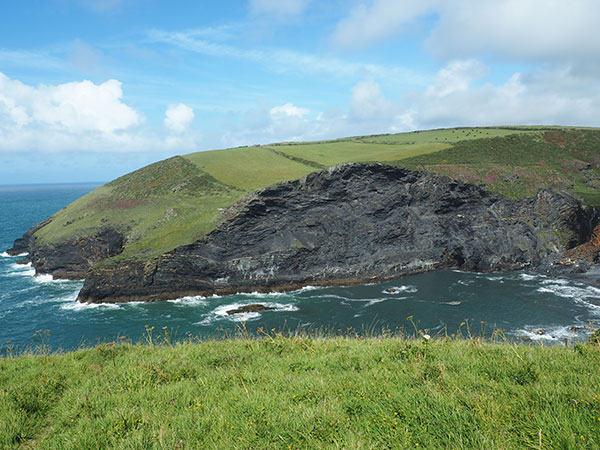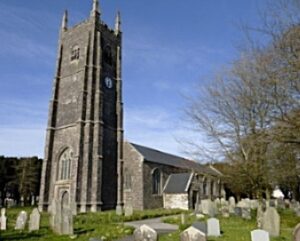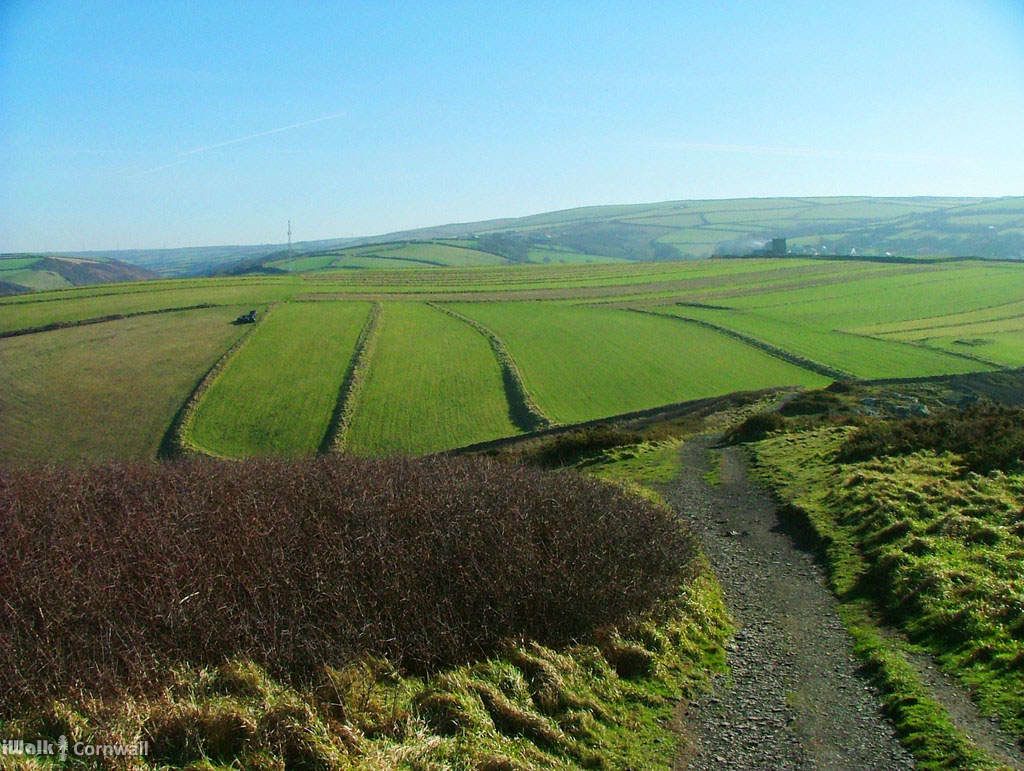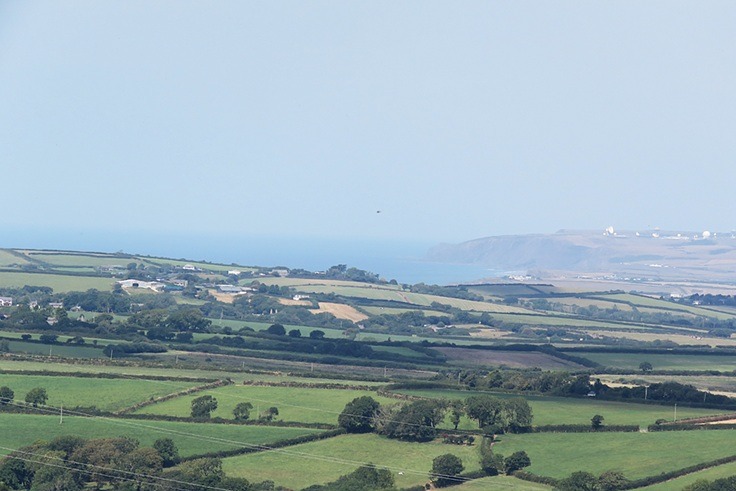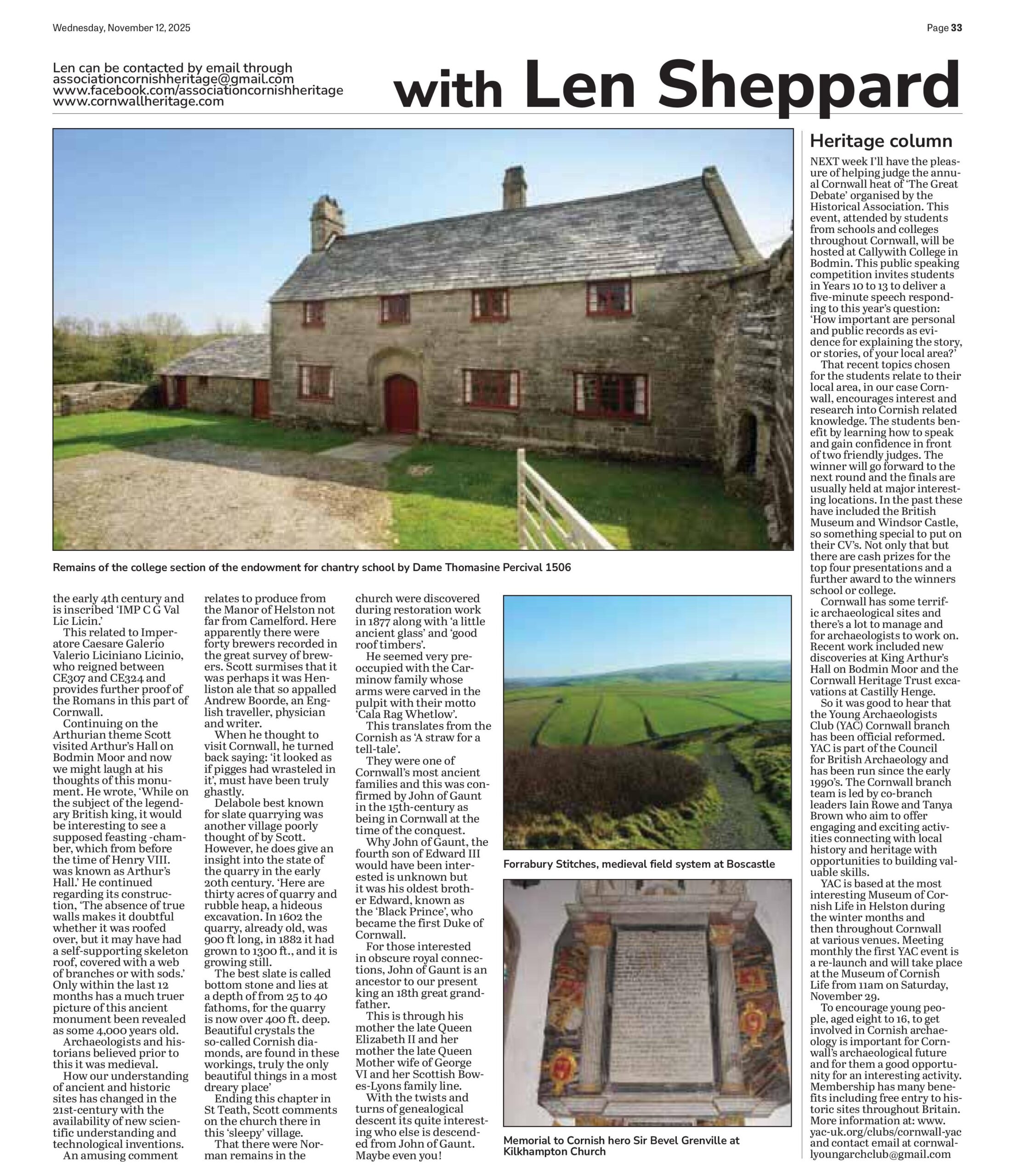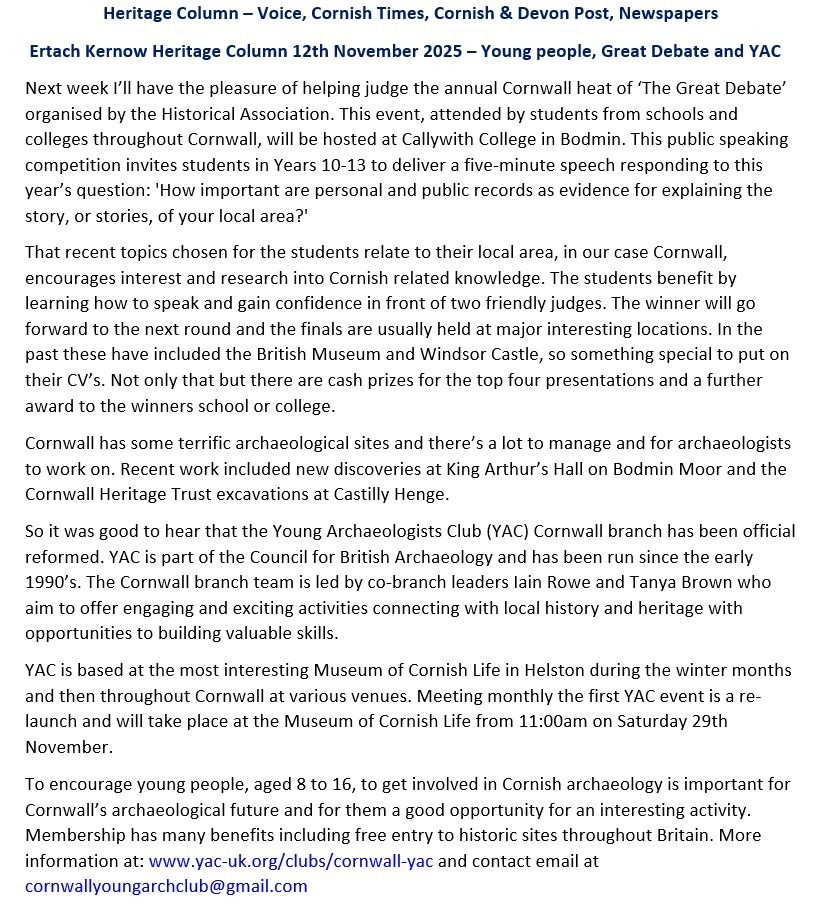Ertach Kernow - Nooks and Corners of Cornwall uncovered
Cornish themed books long out of print are often outdated as to their information due to more recent discoveries and changes to the landscape. However they do have their uses as they provide an insight into what people thought and more obvious what could be seen and enjoyed decades ago or often even longer. Nooks and Corners of Cornwall, written by C A Dawson Scott, was first published in 1911 and split into eleven chapters based on areas around Cornwall. Here we look at some of the earlier chapters and places which interested the author. Some of these places have been covered in earlier Ertach Kernow articles and can be found by searching the websites blog index.
The Boundary between Devon and Cornwall and the village of Kilkhampton begins the first chapter. In it are mentioned its wonderful church and the Grenville family which is long associated with the area and their burials in the vaults below the church. Nooks and Corners does provide some extensive detail about the places mentioned and this is the case with the tiny hamlet of Morwenstow. No mention of this place would be complete without including its famous vicar the Reverend R S Hawker and a little of his history. The fifteenth century house at Tonacombe is described and is little has changed from then over one hundred years to today.
The Victorian poet laureate Alfred Lord Tennyson, an associate of the Reverend Hawker visited Bude and said; ‘That he must go to Bude and be alone with God!’ It was on that first visit that Tennyson and Hawker first met. Scott travelled the area extensively visiting churches at Stratton, Poughill, Marhamchurch and Launcells. His visit to Week St Mary allowed him to tell the story of a young woman, a goose girl, who had the fortune to marry well and outlive her three husbands. Thomasin Perceval returned to her roots a rich widow and spent her life carrying out many philanthropic works. Some of her endowments remain with the College building completed in 1506 now owned and run as a guesthouse by the Landmark Trust.
Thank you for reading the online version of the Ertach Kernow weekly articles. These take some 12 hours each week to research, write and then upload to the website, and is unpaid. It would be most appreciated if you would take just a couple of minutes to complete the online survey marking five years of writing these weekly articles. Many thanks.
Click the link for survey: Ertach Kernow fifth anniversary survey link
As always click the images for larger view
As with other authors who had travelled the path along the cliff tops, Scott was enamoured by the cliffs along the north Cornish coast. He mentions the height of many of these including ‘High Cliff’ near Crackington Cove what he believed to be 735 feet high. This proves you can learn something from old books and I checked this out and he wasn’t far out, just ten feet or so. Arriving at Boscastle Scott mentions the upper part of Forrabury Common which is divided into ‘stitches’ a remnant of medieval field systems. Of the church at Forrabury he considers the restoration work ‘too zealously restored’. At Minster he comments on a cross which had recently been re-erected. ‘Near Minster, on Waterpit Downs, is a fine specimen of Celtic interlaced work on a cross shaft. It is now rescued, but for many years it served to bear the pivot of a threshing-machine.’
Scott moved inland from Boscastle to Otterham where he mentions in particular the church bells. The Church of St Dennis, which actually has six bells, includes the two 15th century bells mentioned by Scott, also a 17th century bell and three more from the 19th century. Of the earlier bells he says ‘two bells dating from before the Reformation and mentioned in the inventory of Edward VI. The inscriptions on these mediaeval bells are interesting, a frequent one being, ‘With my living voice I drive away all evil things.’ These two bells were cast in Exeter and have been identified as historically significant by the national Church Buildings Council.
He then takes time to visit Warbstow Bury, or as he calls it Warbstow Barrow mentioning the hillfort and the barrow in its centre named the ‘Giant’s Grave’. He surmises, ‘perhaps the resting-place of a chieftain who died in defence of the place and was buried where he fell.’ There are wonderful views from the top of Warbstow Bury and for my recent visit to this place see the Ertach Kernow article on the website. He does say that Cornwall is ‘thickly strewn with these memorials of the past’, quite right and like Warbstow the views they offer stretch for many miles. At Tintagel he was rather scathing of the village, calling it primitive. Mass tourism to the village and the castle in particular were still well into the future.
Of course Scott had to mention Arthur and Tintagel Castle and does make the point that the monk Gildas a contemporary of the legendary king makes no mention of him in his writings. He also notes that Tintagel was not mentioned in Domesday and the ruins are of the 13th century, in that he was correct. Also Scott states the castle was restored by Richard Earl of Cornwall not as is believed today actually built by him. Earl Richard had to exchange some manors and land elsewhere in Cornwall to procure the land. It seems unlikely that a previous earl
of Cornwall, Reginald de Dunstanville the eldest illegitimate son of Henry I, built an earlier castle. This was suggested by the 20th century renown archaeologist Radford Raleigh in the 1930’s. This has through more recent extensive and scientific archaeological work been debunked. However Raleigh did also suggest Tintagel was a Celtic monastery site and not ‘Arthurian’. The castle site through the work of the Cornwall Archaeological Unit led by Jackie Nowakowski in 2016 and as seen on television with Professor Alice Roberts proved the site has been inhabited for up to two thousand years with Roman remains uncovered.
Of Arthur himself Scott writes ‘Arthur is a thing of books, of art, not life, of the Morte, the Idylls, and—best of all perhaps—of Clemence Housman's wonderful story ‘Sir Aglovaine de Galis’, but he has no place in present-day folklore.’ Well I’m sure today’s hawkers of Arthurian tat, especially at Tintagel, would be aghast and disagree vehemently. Scott found the discovery of the inscribed stone in 1888 at Tintagel of interest. This ancient stone dates from the early 4th century and is inscribed ‘IMP C G Val Lic Licin.’ This related to Imperatore Caesare Galerio Valerio Liciniano Licinio, who reigned between CE307 and CE324 and provides further proof of the Romans in this part of Cornwall.
Continuing on the Arthurian theme Scott visited Arthur’s Hall on Bodmin Moor and now we might laugh at his thoughts of this monument. He wrote, ‘While on the subject of the legendary British king, it would be interesting to see a supposed feasting -chamber, which from before the time of Henry VIII. was known as Arthur's Hall.’ He continued regarding its construction, ‘The absence of true walls makes it doubtful whether it was roofed
over, but it may have had a self-supporting skeleton roof, covered with a web of branches or with sods.’ Only within the last 12 months has a much truer picture of this ancient monument been revealed as some 4,000 years old. Archaeologists and historians believed prior to this it was medieval. How our understanding of ancient and historic sites has changed in the 21st century with the availability of new scientific understanding and technological inventions.
An amusing comment relates to produce from the Manor of Helston not far from Camelford. Here apparently there were forty brewers recorded in the great survey of brewers. Scott surmises that it was perhaps it was Henliston ale that so appalled Andrew Boorde, an English traveller, physician and writer. When he thought to visit Cornwall, he turned back saying: ‘it looked as if pigges had wrasteled in it’, must have been truly ghastly. Delabole best known for slate quarrying was another village poorly thought of by Scott. However, he does give an insight into the state of the quarry in the early 20th century. ‘Here are thirty acres of quarry and rubble heap, a hideous excavation. In 1602 the quarry, already old, was 900 ft long, in 1882 it had grown to 1300 ft., and it is growing still. The best slate is called bottom stone and lies at a depth of from 25 to 40 fathoms, for the quarry is now over 400 ft. deep. Beautiful crystals the so-called Cornish diamonds, are found in these workings, truly the only beautiful things in a most dreary place’
Ending this chapter in St Teath, Scott comments on the church there in this ‘sleepy’ village. That there were Norman remains in the church were discovered during restoration work in 1877 along with ‘a little ancient glass’ and ‘good roof timbers’. He seemed very preoccupied with the Carminow family whose arms were carved in the pulpit with their motto ‘Cala Rag Whetlow’. This translates from the Cornish as ‘A straw for a tell-tale’. They were one of Cornwall’s most ancient families and this was confirmed by John of Gaunt in the 15th century as being in Cornwall at the time of the conquest. Why John of Gaunt, the fourth son of Edward III would have been interested is unknown but it was his oldest brother Edward, known as the ‘Black Prince’, who became the first Duke of Cornwall.
For those interested in obscure royal connections, John of Gaunt is an ancestor to our present king an 18th great grandfather. This is through his mother the late Queen Elizabeth II and her mother the late Queen Mother wife of George VI and her Scottish Bowes-Lyons family line. With the twists and turns of genealogical descent its quite interesting who else is descended from John of Gaunt. Maybe even you!

